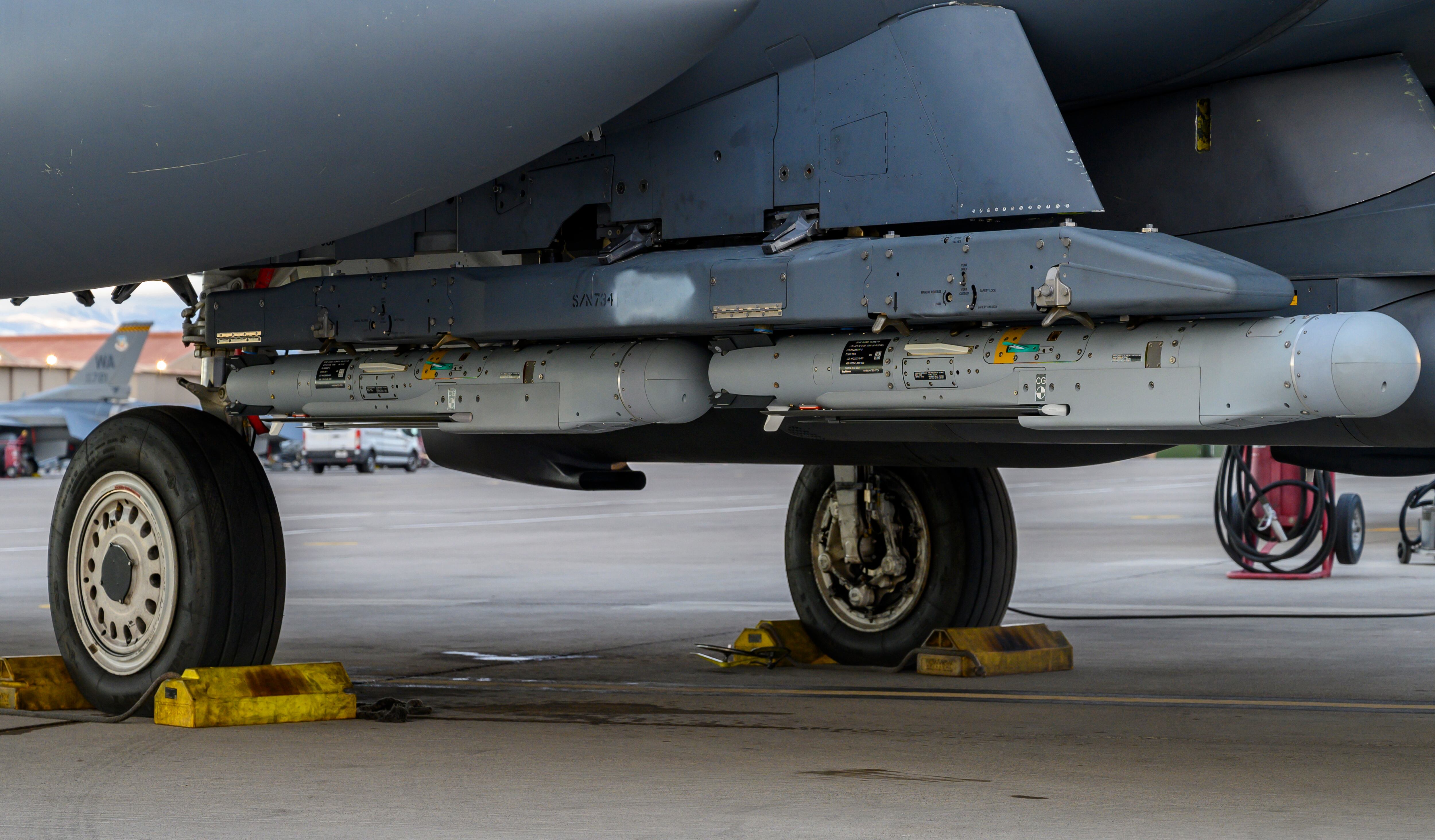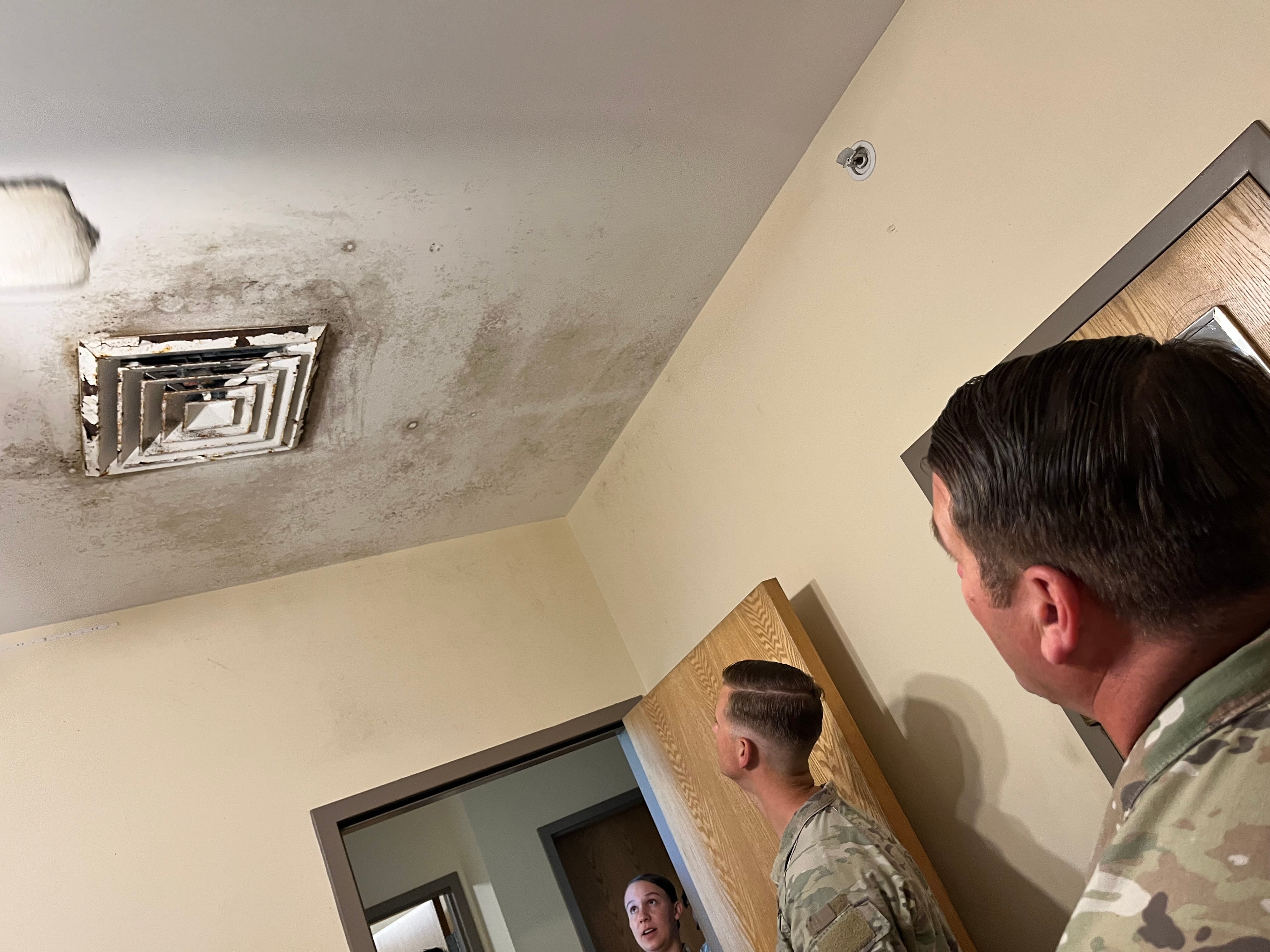WASHINGTON — A squadron from Mountain Home Air Force Base in Idaho has became the first operational unit to use the GBU-53/B StormBreaker smart bomb — a major step forward for the long-delayed small diameter bomb.
In the test last month, four F-15E Strike Eagles from the 391st Fighter Squadron, which is part of the 366th Fighter Wing, targeted and hit four moving vehicles on the ground with four Raytheon Technologies-made StormBreakers at the Utah Test and Training Range on Nov. 2, the Air Force said in a Dec. 13 release.
Alison Howlett, who serves as StormBreaker program director at Raytheon Missiles and Defense, said in the release that the tests were needed to pave the way for the weapon to be used in combat.
“By stress-testing the weapon in an operational environment, we are even more confident in the weapon’s ability to strike targets in difficult conditions,” Howlett said.

So far, the StormBreaker is only approved for integration on the F-15E, the Air Force said. But results from this test will eventually lead to its use on the F/A-18E/F Super Hornet and fifth-generation fighters like the F-35, the release said.
It’s a major step forward for a weapon that at one point was delayed for roughly a year by production problems. A key component had a technical problem, which in July 2019 caused a pause in production of the weapon. Raytheon redesigned the component and retrofit nearly 600 bombs that were already delivered. The Air Force resumed fielding the weapon in September 2020.
The 204-pound StormBreaker is a relatively small weapon measuring 69 inches long and about 7 inches in diameter, allowing the Strike Eagle to carry up to 28 of them. This would come in handy when an F-15E needs to strike multiple ground targets with a high level of accuracy, the Air Force said.
The weapon has a 105-pound warhead. It can strike stationary targets up to 69 miles away and moving targets up to 45 miles away using a combination of millimeter wave active radar homing, semi-active laser guidance, infrared homing, GPS-coupled inertial guidance and data link technology.
The Air Force said the bomb’s connectivity allows redirection to a new target midair after launch.
But these additional capabilities require more coordination and planning. Intelligence airmen are needed to load encrypted communication information into the bomb’s computer so it and the aircraft can communicate with one another, the release said.
This is a more extensive process than needed for typical F-15E bombs, 1st Lt. Estefania Ortiz-Santiago, the 391st’s fighter squadron officer in charge of intelligence, said in the release. But she expects squadrons will eventually streamline the process for preparing the StormBreaker until it takes about as long as other Strike Eagle bombs.
Raytheon also announced Nov. 30 that a Marine Corps F-35B had dropped the StormBreaker for the first time in a weapons test. Raytheon said developmental and operational testing on the F-35B will continue in order to ensure safe and capable use, and that the Navy will declare initial operational capability on the Super Hornet after its operational testing concludes.
Stephen Losey is the air warfare reporter for Defense News. He previously covered leadership and personnel issues at Air Force Times, and the Pentagon, special operations and air warfare at Military.com. He has traveled to the Middle East to cover U.S. Air Force operations.










